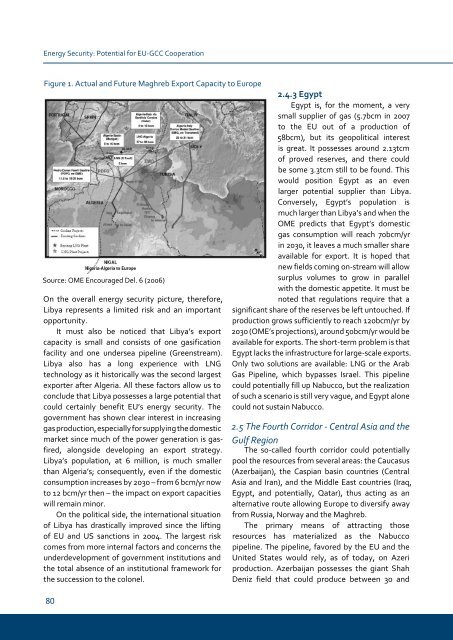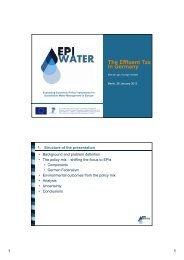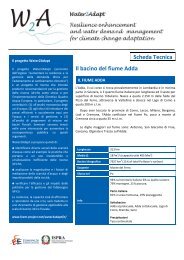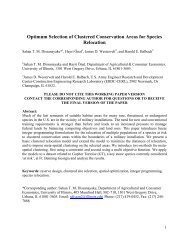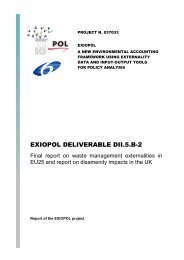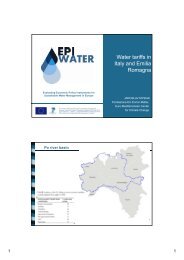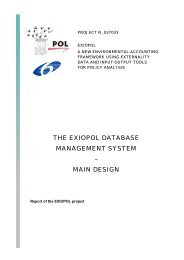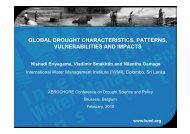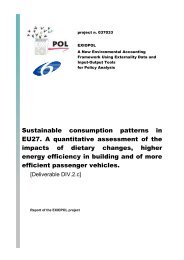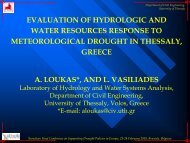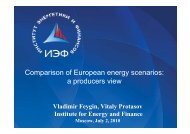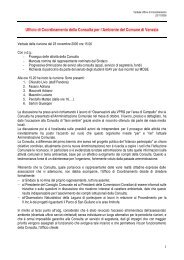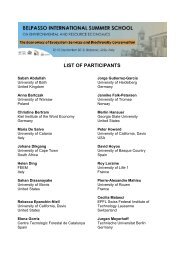Gulf and European Energy Supply Security - Feem-project.net
Gulf and European Energy Supply Security - Feem-project.net
Gulf and European Energy Supply Security - Feem-project.net
You also want an ePaper? Increase the reach of your titles
YUMPU automatically turns print PDFs into web optimized ePapers that Google loves.
<strong>Energy</strong> <strong>Security</strong>: Potential for EU-GCC Cooperation<br />
Figure 1. Actual <strong>and</strong> Future Maghreb Export Capacity to Europe<br />
Source: OME Encouraged Del. 6 (2006)<br />
On the overall energy security picture, therefore,<br />
Libya represents a limited risk <strong>and</strong> an important<br />
opportunity.<br />
It must also be noticed that Libya’s export<br />
capacity is small <strong>and</strong> consists of one gasification<br />
facility <strong>and</strong> one undersea pipeline (Greenstream).<br />
Libya also has a long experience with LNG<br />
technology as it historically was the second largest<br />
exporter after Algeria. All these factors allow us to<br />
conclude that Libya possesses a large potential that<br />
could certainly benefit EU’s energy security. The<br />
government has shown clear interest in increasing<br />
gas production, especially for supplying the domestic<br />
market since much of the power generation is gasfired,<br />
alongside developing an export strategy.<br />
Libya’s population, at 6 million, is much smaller<br />
than Algeria’s; consequently, even if the domestic<br />
consumption increases by 2030 – from 6 bcm/yr now<br />
to 12 bcm/yr then – the impact on export capacities<br />
will remain minor.<br />
On the political side, the international situation<br />
of Libya has drastically improved since the lifting<br />
of EU <strong>and</strong> US sanctions in 2004. The largest risk<br />
comes from more internal factors <strong>and</strong> concerns the<br />
underdevelopment of government institutions <strong>and</strong><br />
the total absence of an institutional framework for<br />
the succession to the colonel.<br />
0<br />
2.4.3 egypt<br />
Egypt is, for the moment, a very<br />
small supplier of gas (5.7bcm in 2007<br />
to the EU out of a production of<br />
58bcm), but its geopolitical interest<br />
is great. It possesses around 2.13tcm<br />
of proved reserves, <strong>and</strong> there could<br />
be some 3.3tcm still to be found. This<br />
would position Egypt as an even<br />
larger potential supplier than Libya.<br />
Conversely, Egypt’s population is<br />
much larger than Libya’s <strong>and</strong> when the<br />
OME predicts that Egypt’s domestic<br />
gas consumption will reach 70bcm/yr<br />
in 2030, it leaves a much smaller share<br />
available for export. It is hoped that<br />
new fields coming on-stream will allow<br />
surplus volumes to grow in parallel<br />
with the domestic appetite. It must be<br />
noted that regulations require that a<br />
significant share of the reserves be left untouched. If<br />
production grows sufficiently to reach 120bcm/yr by<br />
2030 (OME’s <strong>project</strong>ions), around 50bcm/yr would be<br />
available for exports. The short-term problem is that<br />
Egypt lacks the infrastructure for large-scale exports.<br />
Only two solutions are available: LNG or the Arab<br />
Gas Pipeline, which bypasses Israel. This pipeline<br />
could potentially fill up Nabucco, but the realization<br />
of such a scenario is still very vague, <strong>and</strong> Egypt alone<br />
could not sustain Nabucco.<br />
2.5 The Fourth Corridor - Central Asia <strong>and</strong> the<br />
<strong>Gulf</strong> Region<br />
The so-called fourth corridor could potentially<br />
pool the resources from several areas: the Caucasus<br />
(Azerbaijan), the Caspian basin countries (Central<br />
Asia <strong>and</strong> Iran), <strong>and</strong> the Middle East countries (Iraq,<br />
Egypt, <strong>and</strong> potentially, Qatar), thus acting as an<br />
alternative route allowing Europe to diversify away<br />
from Russia, Norway <strong>and</strong> the Maghreb.<br />
The primary means of attracting those<br />
resources has materialized as the Nabucco<br />
pipeline. The pipeline, favored by the EU <strong>and</strong> the<br />
United States would rely, as of today, on Azeri<br />
production. Azerbaijan possesses the giant Shah<br />
Deniz field that could produce between 30 <strong>and</strong>


